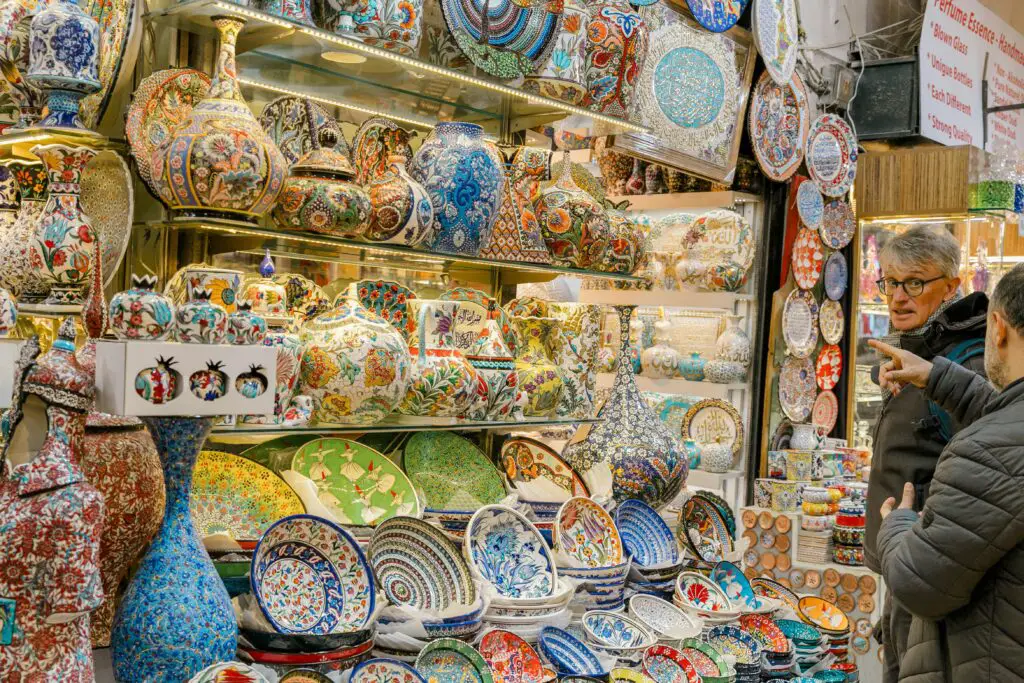1. Start with Reputable Sites

Not all online marketplaces are created equal. Stick to well-known platforms like eBay, Etsy, or specialized antique dealer websites. You’re more likely to find authentic pieces and have buyer protection if something goes wrong.
2. Read Reviews and Seller Ratings
Before making a purchase, always check the seller’s reviews and ratings. Buyers usually leave detailed feedback, which can help you spot trustworthy sellers or warn you away from potential scams.
3. Look for Detailed Descriptions
A good seller will provide a thorough description of the item, including its age, condition, and history. Be wary of vague listings with little information—these can be a red flag that the seller isn’t knowledgeable or isn’t offering what they claim.
4. Request Additional Photos
Photos are your best friend when antique shopping online. If the listing doesn’t show enough angles or details, don’t hesitate to ask for more. This will give you a clearer idea of the item’s condition and help you avoid any surprises.
5. Watch Out for Shipping Costs
Antiques can be bulky, fragile, or heavy, which means shipping can get pricey. Before you commit to a deal, factor in the shipping costs—sometimes they can turn a bargain into an over-the-top expense!
6. Use Filters to Narrow Your Search
Online shopping can be overwhelming with so many options. Use filters like price range, condition, or seller location to narrow down your choices. This helps you focus on finding exactly what you want without getting lost in the endless scroll.
7. Don’t Be Afraid to Haggle

Just because you’re online doesn’t mean you can’t negotiate. Many sellers, especially on platforms like eBay or Etsy, are open to offers. Don’t be shy about sending a polite message asking for a lower price—you might be surprised by the response.
8. Check for Return Policies
Not every antique purchase is love at first sight. Make sure the seller offers a return policy, so if the item doesn’t meet your expectations or arrives damaged, you’re not stuck with it. A flexible return policy is a good indicator of a trustworthy seller.
9. Set Up Alerts for Specific Items
Most online platforms allow you to set up search alerts for specific keywords or categories. If you’re hunting for a rare piece, set up alerts to get notified when new listings are posted. This way, you can be the first to jump on a great deal.
10. Time Your Purchases
If you’re shopping on auction sites like eBay, timing is everything. Most auctions end during the evening or weekends when more people are online. Try bidding during less busy times to snag better deals with less competition.
11. Compare Prices Across Platforms
Just because you see a great deal on one site doesn’t mean it’s the best price out there. Take a few minutes to check other websites or sellers offering similar items. You might find a better deal or a more trustworthy seller elsewhere.
12. Pay Attention to the Item’s Condition

Online photos can sometimes hide flaws or damage. Be sure to read the condition description carefully and ask the seller about any repairs, restorations, or wear that isn’t immediately visible in the photos.
13. Join Online Antique Communities
There are tons of antique-loving communities online where collectors share their finds, tips, and even deals they come across. Joining groups or forums can help you discover reputable sellers and get advice on scoring deals from seasoned collectors.
14. Trust Your Instincts
If something feels off—whether it’s a seller’s story, the price, or the lack of information—it’s okay to walk away. Trust your gut when making online purchases. There are always more antiques out there, and patience will help you avoid regrets.
With these tips, you can master the art of antique shopping from the comfort of your home and score some amazing deals. Happy hunting!


